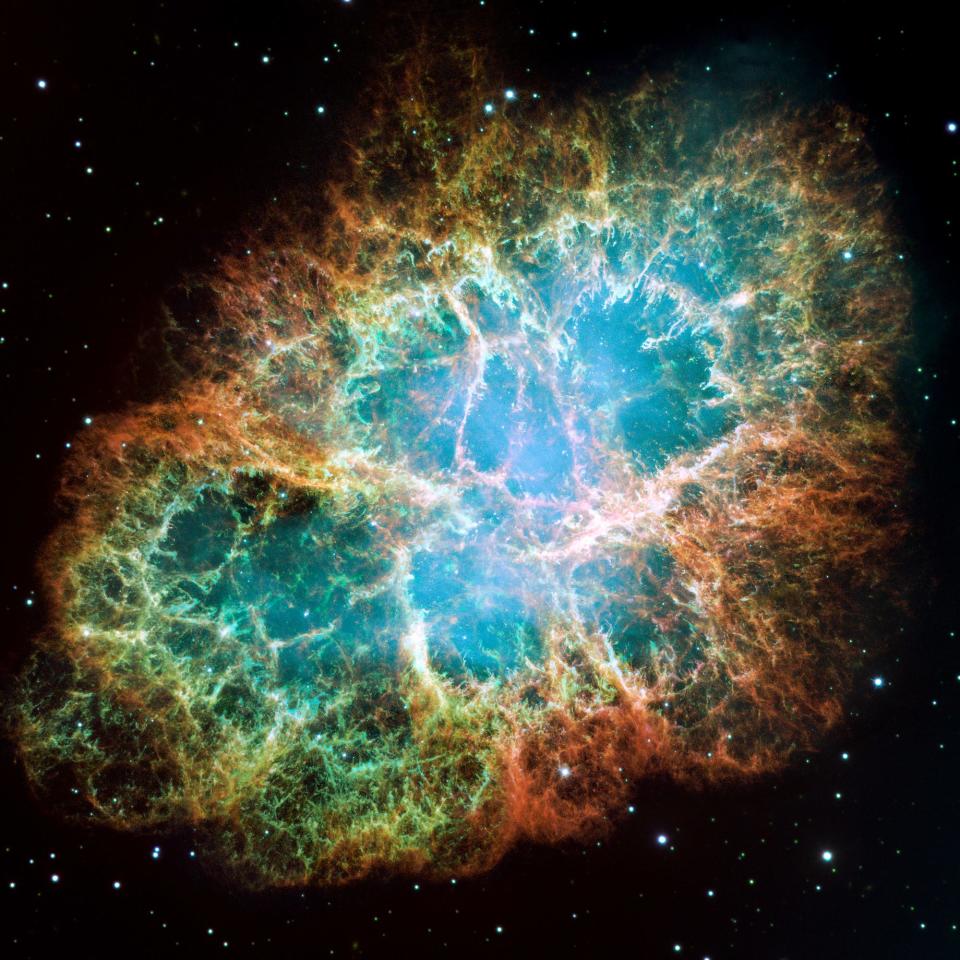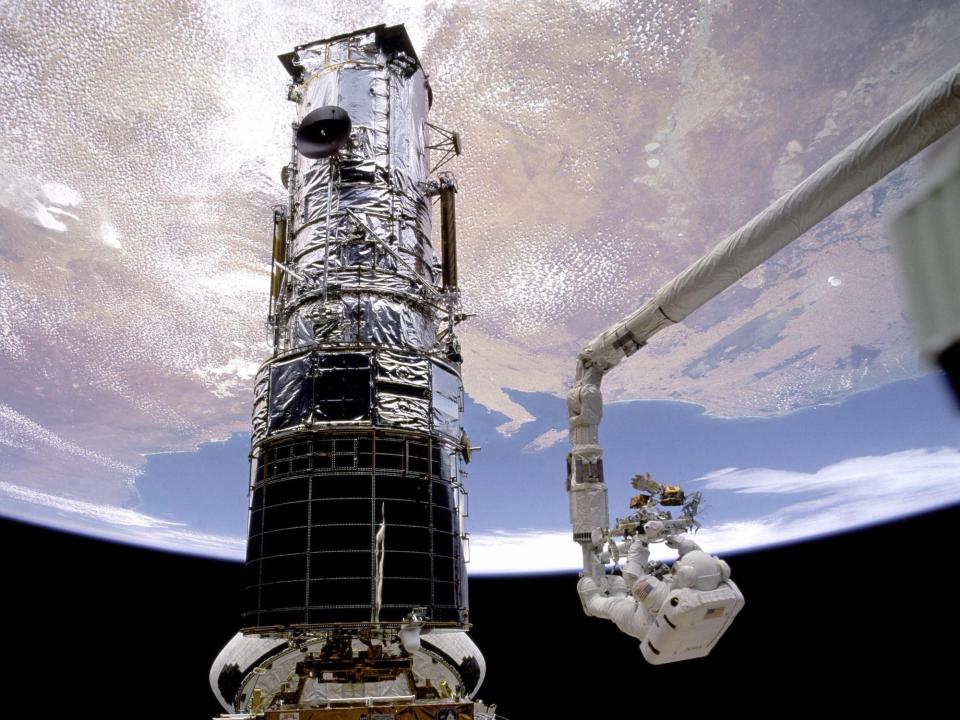NASA may attempt a 'risky' maneuver to fix its broken Hubble Space Telescope this week
A mysterious glitch took NASA's Hubble Space Telescope offline a month ago.
The problem has stumped engineers, but NASA is going to try switching to backup hardware.
A NASA scientist says there's no guarantee, but the switch could finally bring Hubble back online.
NASA's Hubble Space Telescope has been offline for a month.
The telescope's payload computer - a 1980s machine that controls and monitors all of the spacecraft's science instruments - suddenly stopped working on June 13. Engineers have been troubleshooting the problem since then, with little success. They still don't know what exactly is causing the glitch.
However, recent NASA announcements suggest a glimmer of hope: The Hubble team is preparing to switch malfunctioning parts of the telescope's hardware to their back-up components. The switch could occur as soon as this week, paving the way for the payload computer to come back online and restart Hubble's scientific observations.
NASA has said that although the telescope and its scientific instruments remain in working condition, the switch will be "riskier" than engineers expected after they first assessed the problem.
"You can't see the spacecraft, you can't watch it happen. You have to make sure that your command uploads are going to do exactly what you intend them to do," Paul Hertz, director of NASA's astrophysics division, told Insider.
So NASA engineers are checking and double-checking their plans before sending any commands to the spacecraft.
"You don't want to accidentally turn off the radio receiver. You don't want to accidentally swap a battery that isn't ready to be swapped," Hertz explained. "You just don't want to accidentally break anything."
"I do believe they're going to succeed, but it's not guaranteed," he added.
NASA has successfully switched Hubble to back-up hardware before

Hubble is the world's most powerful space telescope; it orbits 353 miles above the Earth.
On June 30, NASA announced it had figured out that the source of the payload computer problem wasn't the computer at all - it came from other hardware in Hubble's Science Instrument Command and Data Handling unit, where the computer resides.
"When we thought the problem was in the payload computer, we were more optimistic that we would be able to recover quickly," Hertz said. "Now we're a little bit more sober, because it looks like it's in the spacecraft side, which are harder to swap in and out."
Engineers think the issue could originate in a glitchy power regulator, or in a module that helps send commands to the telescope's science instruments and prepare data from those instruments to beam back to Earth.
The good news, however, is that each piece of hardware has a corresponding back-up piece pre-installed on the telescope. So it's just a matter of switching to that redundant hardware.

The team has run simulations of the switch on Hubble-imitating computers on Earth, and NASA has done two reviews of the hardware-switching procedures. So NASA said on Tuesday that it might command Hubble to switch over "later this week."
"I've told the team: I am not in a hurry," Hertz said. "The most important thing is to safely recover Hubble - not to recover Hubble as quickly as possible."
NASA has rebooted Hubble using this type of operation in the past. In 2008, after a computer crash took the telescope offline for two weeks, engineers switched over to redundant hardware. A year later, astronauts repaired two broken instruments while in orbit - that was Hubble's fifth and final reservicing operation. (NASA does not currently have a way to launch astronauts to the space telescope.)
Hubble's hardware is aging

Hubble, which launched into orbit in 1990, has captured images of the births and deaths of stars, discovered new moons around Pluto, and tracked two interstellar objects as they zipped through our solar system. Its observations have allowed astronomers to calculate the age and expansion of the universe and to peer at galaxies formed shortly after the Big Bang.
But the telescope hasn't been upgraded since 2009, and some of its hardware is more than 30 years old.
"Could the cause of the problem have something to do with Hubble's age? The answer is almost certainly yes," Hertz said. "Someday, a component will randomly fail that we won't have a backup for. That's the most likely way the Hubble mission will end."
But for now, getting the observatory back online is critical to NASA.
"Hubble is one of NASA's most important astrophysics missions. It's been operating for over 31 years, and NASA is hopeful it will last for many more years," an agency spokesperson told Insider in June.
This post has been updated with new information. It was originally published on July 9, 2021.
Read the original article on Business Insider

